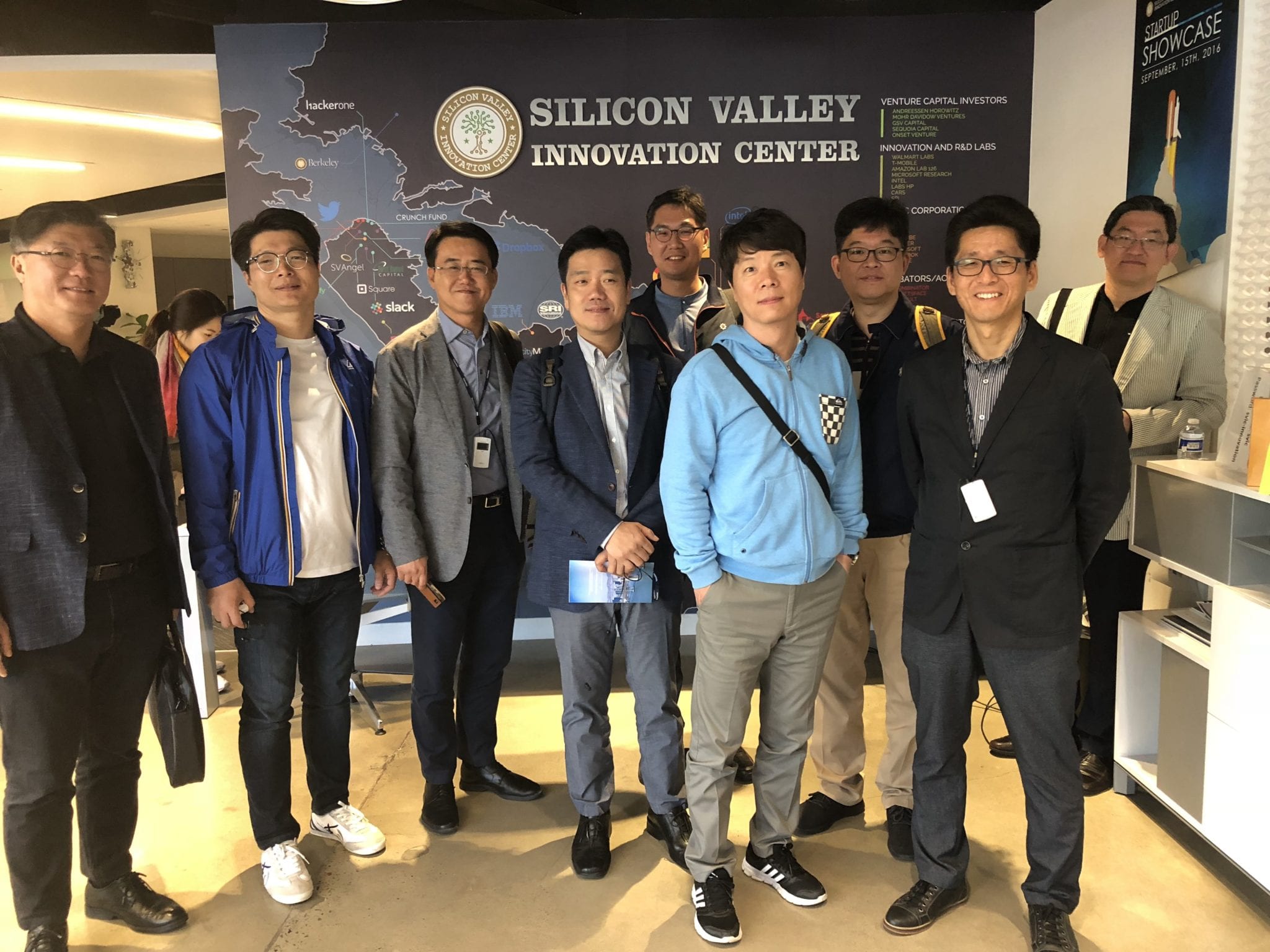Transport will become increasingly social and autonomous; that was the key takeaway for top South Korean executives following a one-day immersion tour of Silicon Valley with SVIC.
The tour group hailed from GS, a Seoul-based conglomerate with subsidiaries in the energy, retail, manufacturing and logistics sectors.
One of the challenges now facing the conglomerate’s leadership is to get to grips with autonomous vehicles. GS is especially interested in understanding their value in supply chain operations.
Silicon Valley proved to be a rich source of information and inspiration. The executives’ tour shed light on a number of fast-developing areas in the world of high-tech transport and logistics.
Laser vision
It’s often described as one of the most important components of autonomous vehicles: lidar – also known as laser vision – maps the world in three dimensions. The technology is a close cousin to radar. But where the latter emits radio waves to measure distances, lidar relies on lasers invisible to the human eye.
Among the world’s leading manufacturers of the technology is Velodyne. For more than a decade the company has been refining its lidar offerings. Today its users include well-known names like Mercedes-Benz, Volvo and Ford.
But as the GS executives discovered during a meeting at Velodyne’s San Jose offices, autonomous cars are just part of the story. Lidar also has applications in drone-based aerial data collection, industrial vehicle navigation and three-dimensional mobile mapping.
Velodyne is not alone in what is an increasingly crowded laser vision market. Competitors include the Silicon Valley-based Luminar and Israeli startup Innoviz. Both say they are set to manufacture and ship thousands of lidar units this year. Both believe their products offer significant advantages over those currently available.
But while lidar may be gradually moving the world closer to truly driverless cars, for now it appears to be most applicable to industry. That’s down to the relatively high cost of the technology, something which has prevented it from becoming more deeply integrated into mainstream automobile manufacturing.
What’s more, lidar still needs to get more sophisticated. Although today self-driving vehicles are capable of seeing many obstacles on the road, there are still some which cause problems. Luminar CEO Austin Russel has described these as the last “one per cent” of “edge cases.”
“A lot of people make it seem like autonomous vehicles are just around the corner,” he said in a May 22 interview. “But the reality is that this is a really hard problem as a whole and a lot of things need to happen to solve that last one per cent.”
Social, app-based transport
Meanwhile, as long as cars and trucks still require human drivers, it seems crowdsourcing and the sharing economy will take centre stage. Both trends are set to play big roles in the future of transport through a slew of new apps; experts say Uber and Lyft are just the tip of the iceberg.
At a meeting with venture capital firm Autotech Ventures, the GS team from South Korea heard how a novel set of apps is rising to prominence. That includes Outdoorsy, an RV rental marketplace, and communications platform Realine, described as the “Slack” of the logistics industry.
Elsewhere, Waze is perhaps one of the brightest examples of how the sharing economy is transforming transport. The app’s 100-million strong network of users crowdsources information to build driving maps. Real-time reports on traffic and road conditions give motorists the best chance of stress-free travel.
A presentation at Waze showed GS’s executives how the app also has social elements. Among them is integration with Facebook, which means drivers can see when their friends are heading in the same direction.
The GS group also caught a glimpse of the future. They saw how ridesharing via a “carpool” feature is set to form a growing part of Waze’s offering. Currently only available in selected cities, the company intends to expand ridesharing in a big way. It hopes to connect more and more of the world’s drivers and ride-seekers. Describing itself as “the social navigation pioneer” Waze states that its mission is get extra cars off the road and put an end to being stuck in traffic.
Disrupt or be disrupted
For GS, even spending just one day in Silicon Valley proved to be a worthwhile trip. As a large conglomerate, keeping up with the latest tech trends is essential. Failing to do so only increases the likelihood of having a core business disrupted by a new market entrant.

But aside from the threats, Silicon Valley also presented huge potential opportunities. Interacting with companies like Velodyne and Waze, the GS executives gained insight into how next-generation transport could transform their business. They heard the insider view on areas like autonomous drones and crowdsourced mapping.
The team from South Korea went away filled with thought-provoking ideas. They were also armed with knowledge essential for doing battle in today’s digital economy.